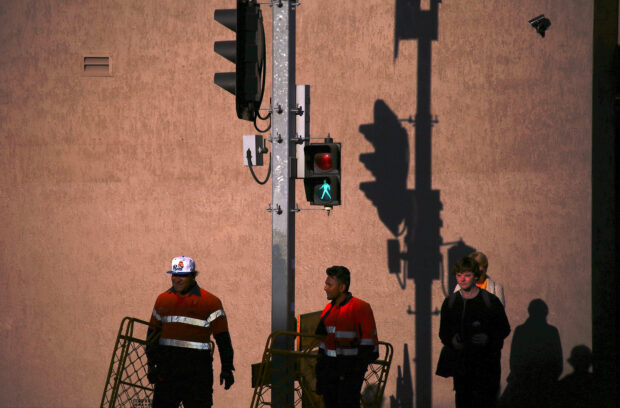Workers in central Newcastle, Australia, were photographed carrying barriers as they waited to cross a street at a set of traffic lights during sunset. Australian wage growth remained unchanged in the June quarter, but the pace of annual pay awards unexpectedly slowed. This development has raised hopes that inflationary pressures are weakening, and it strengthens the case against further interest rate increases.
The dovish minutes from the Reserve Bank of Australia’s (RBA) July policy meeting, coupled with the wage growth data, have led investors to believe that the RBA will maintain stable interest rates for a third consecutive month in September. The probability of this outcome has increased from 85% to 91%.
As a result, the Australian dollar initially dropped to $0.6463 but later stabilized at $0.6489. Meanwhile, three-year bond futures recovered from their earlier losses and were only down by 2 ticks at 96.07.
According to data released by the Australian Bureau of Statistics, the wage price index (WPI) rose by 0.8 percent in the June quarter, falling short of the forecasted 0.9 percent increase. Annual pay growth also eased slightly to 3.6 percent from the previous quarter’s decade high of 3.7 percent.
Despite higher interest rates, Australia’s jobless rate remains near a 50-year low of 3.5 percent, and the economy continues to add more jobs than expected. However, wages are still lagging behind inflation, resulting in a squeeze on real incomes.
The RBA’s latest forecasts show a credible path where annual wage growth will peak at 4.1 percent by the end of the year before gradually easing to 3.6 percent by the end of 2025. However, there is a risk that wages in the third quarter could spike higher due to a large mandated increase in minimum and award wages. This could prompt the RBA to raise rates one last time by the end of the year, with investors currently placing the chance of this happening above 50 percent.
Economists, such as Andrew Boak from Goldman Sachs, believe that the second quarter wages data is not particularly informative. They expect the RBA to assign more significance to the third quarter WPI report, which is due in November, and broader measures of nominal unit labor costs in the June quarter National Accounts, set to be released on September 6.
The data also revealed that wages in the public sector rose by an annual rate of 3.1 percent, while private sector wage growth was at 3.8 percent.
Denial of responsibility! SamacharCentrl is an automatic aggregator of Global media. In each content, the hyperlink to the primary source is specified. All trademarks belong to their rightful owners, and all materials to their authors. For any complaint, please reach us at – [email protected]. We will take necessary action within 24 hours.

Omprakash Tiwary is a business writer who delves into the intricacies of the corporate world. With a focus on finance and economic landscape. He offers readers valuable insights into market trends, entrepreneurship, and economic developments.


